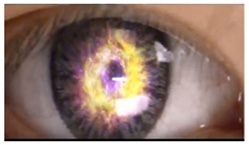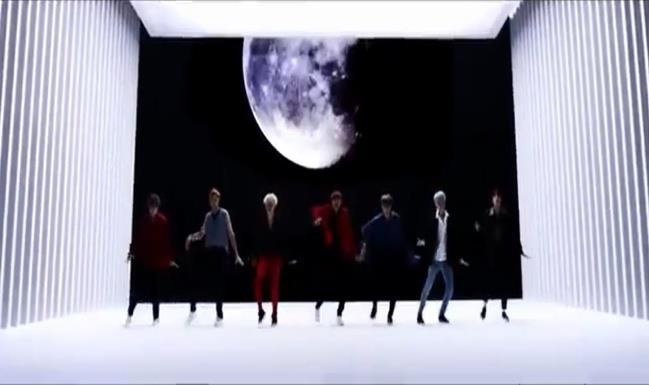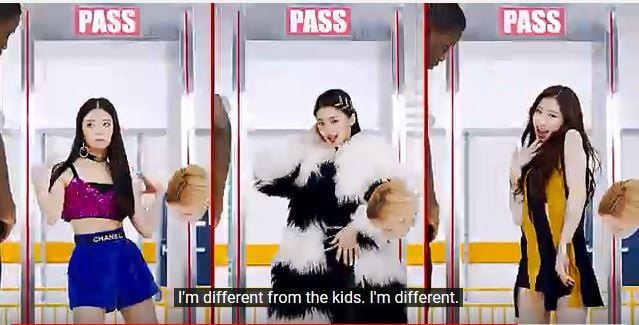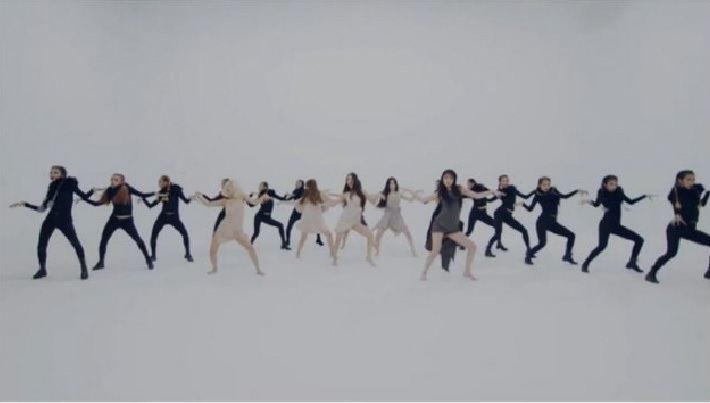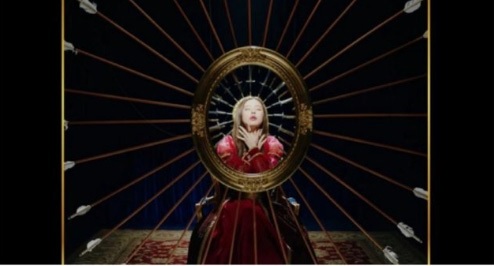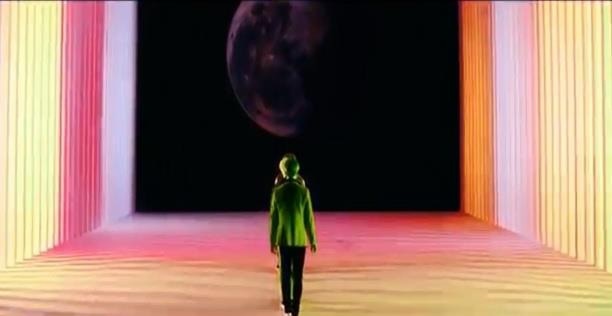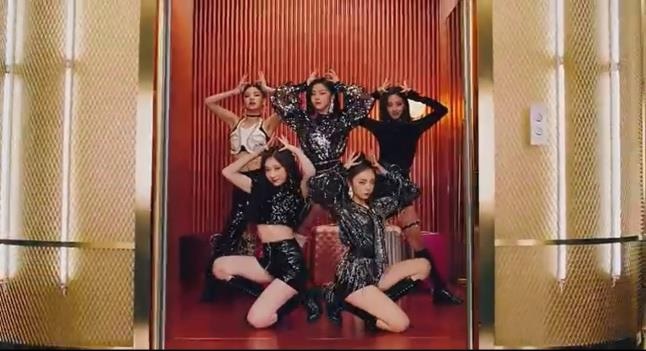
New Gender Perspectives: Soft Creator and Strong Advocator in the New Korean Wave Era
Abstract
This study explores the kinds of power K-pop idol stars have obtained and how they handle gender problems, because K-pop has a great deal of influence on global fans who want to identify with K-pop stars. First, under the heading “New Gender Images: Soft Power and Strong Power,” I show how the male groups’ performance and communication methods create a soft power contrary to the traditional notion of masculinity. I also discuss the Ssen unni (“the girl-crush woman”) phenomenon that reflects on what women desire. Using strong power, Ssen unni can criticize how women are forced to be submissive and voiceless and use their powerful voices to reveal their desire to be professional singers. Second, in “I Am Different: Produced by Soft Creator and Strong Advocator,” I select the key images produced by colors, gestures, and spaces in the music videos for “DNA,” “Dalla, Dalla,” and “Lion” and analyze how the theme “I Am Different” is expressed using both soft and strong power. In conclusion, as creators, the Bangtan Boys (B.T.S.) clearly generate a new world full of consolation and social changes, while the girl groups ITZY and (G)-I DLE exist as strong advocates for women who need role models to inspire them to find their own identities.
Keywords:
K-pop, advocator, creator, Ssen unni, soft power, strong power, consolation, inspirationIntroduction
K-pop,1 the cultural phenomenon of the so-called “Korean wave” (Hallyu), has emerged as part of the global culture mainstream because of two significant elements: the development of communication technology and the unfolding of K-pop’s unique storytelling technique. First, while the existing Korean wave consisting mainly of Korean dramas has been “using a simple distribution structure through overseas exports and TV sets” (Byun, 2011, p. 20), K-Pop’s growing leadership of the new Korean wave has attracted attention by appearing simultaneously around the world, debuting through new media platforms such as YouTube or pre-released music videos rather than through typical media such as television (Cho & Sim, 2013, p. 93). Technology and new distribution techniques have given K-pop the necessary foothold to make a foray into the global culture market.
Second, K-pop combines music with a unique storytelling technique that illustrates each member’s designated role in the group and facilitates the formation of a fandom.2 Third, K-pop stars must show professionalism in singing, dancing, and composing songs as well as good personalities, which enables the establishment of relationships with their fans. Finally, whereas K-dramas promote Korean traditions and values and focus on love stories,3 K-pop increasingly highlights individual self-determination by focusing on the search for individual happiness and identity and by criticizing social issues such as school bullying, social oppression, and economic problems (Kim, 2017, p. 161).
Now is a critical time to discuss the gender issues in the entertainment industry and popular culture,4 because K-pop’s global popularity has expanded and organized to establish a global basis for an independent culture, proving the possibility of its becoming “a continuous trend” (Koh & Baek, 2020, p. 2). Moreover, K-pop stars have a great deal of influence on those global fans who want to identify with them. Therefore, in this study, I will examine how traditional gender identity has been altered into “soft” power and “strong” power. I will also discuss why K-pop stars can be called soft “creators” when it comes to boy groups and strong “advocators” when it comes to girl groups.
First, in “New Gender Images: Soft Power and Strong Power,” I will look at the characteristics of masculinity and femininity found in the star attributes of idol group members, and examine what changes have occurred in K-pop. The star attributes that K-pop idols are required to have are appearance, style, talent, and communication skills. I will examine how the male group members cultivate soft power contrary to the traditional notion of masculinity and console the fan. I will also investigate why female groups strive to cultivate strong power, under what conditions the Ssen unni (“the girl-crush woman”) phenomenon appears in K-pop culture, and what kind of inspiration Ssen unni gives fans. Second, in “I Am Different: Produced by Soft Creator and Strong Advocator,” I will select relevant music videos, an effective medium to promote the reputation of idol groups, and explore how the theme “I Am Different” is expressed through soft power, which transforms the boys into creators, and through strong power, with which the girls’ voices advocate their desire to become professional singers and independent people in society.
New Gender Images: Soft Power and Strong Power
Stars are regarded as powerful people, because people believe that “star power is defined as the stars’ ability to persuade their fans to do many things on their behalf” (Cho, Seo, & Lee, 2018, p. 57). This means that stars have a great deal of influence over their fans’ thoughts and attitudes toward gender issues. Although boy and girl group members have been trained by the entertainment companies5 that lead the mass culture trends, not everyone can become an idol. Aside from the power of the entertainment company, each member must have specific talents to succeed in becoming a star. Idols develop a professional ability to sing and dance and build credibility through their personalities and continuous popularity; as a result, their fans are attracted to them (Cho et al., 2018, p. 58). Professionalism, credibility, and attraction help fans identify with their stars’ personalities and feel satisfaction with financial success (Cho et al., 2018, p. 63). Fans regard the stars’ splendor as the “swag” that indicates a person with “a confident attitude that people admire.”6 Based on these three successful star attributes, the idols play the leading role in establishing the relationship with the fans who support their activities.7
I argue that boy groups pursue soft power and girl groups possess strong power. This does not mean that they simply reverse their characteristics or acquire a cross-gender identity. They avail themselves of the power to express what they want to say, not confining themselves to traditional masculinity and femininity. Recreating the meaning of gender identities, they are clearly setting the goals: With soft power, the boys express how we can live together peacefully and comfort each other; on the other hand, with strong power, the girls want to provide inspiration to women. The differences between the goals give influences the ways of revealing their objectives. Whereas the soft power visualizes an unknown world and things, the strong power sheds light on an invisible girl’s presence and gives a voice to the silent.
When I trace the characteristics of the boy and girl groups, I find they take different social positions in relation to the traditional gender norms. Some boy group members actively participate in their activities as composers, producers, choreographers, and even stylists, so that they can make their invisible vision of the world a concretely visualized reality. I call this power “soft” because of the way they spread their thoughts: they try to be honest about their feeling in such a competitive world. In addition, destroying the boundary between the star and the fan, they say that we are all vulnerable and need comfort and care. I think that K-pop’s soft power stems from the delicate heart of consolation rejected by traditional masculinity.
In contrast, the girl groups struggle to possess their own characteristics as professional artists rather than simply entertainers. In the entertainment industry, some girl groups still elaborate the submissive femininity and highlight sexuality to the extreme. Others, however, appear as advocators who strongly declare what kind of artist they want to be and how they try to work, refusing the conventional frame of being “a feminine and obedient” girl. I define this power as “strong” because in realizing how they exist as objects of the male gaze, these girl groups encourage other girls to achieve the right to be free from such a unilateral relationship: to be strong does not mean to be macho, but to be self-confident.
In order to comprehend how this shift occurred, I will examine the characteristics of masculinity and femininity found in the history of K-pop, and discuss how idols have gradually acquired soft and strong power. First of all, K-pop has undergone three evolutions. After Seo Tai-ji and Boys first appeared in 1992, the first-generation boy groups appeared in 1996, complete with an organized fandom that showed their loyalty in diverse ways. In the case of the group H.O.T., they led their fans8 by emphasizing a strong masculinity and using mysterious strategies, meaning that group members had to conceal their real characters in public. By following the stereotypical dichotomy of male and female gender roles, they could exercise their powerful masculinity over the fans.
In comparison, the second-generation idol groups paid significant attention to improving their outward appearance as well as their expertise. It was during this time Big Bang started playing a significant role in the wider pop culture by becoming globally recognized. Since then, such idol groups have become the “new masters” (Lee, 2011, p. 194) of Korean culture. For example, the leader of Big Bang, G-Dragon, is a professional singer and dancer as well as an excellent producer: he has a unique charisma that make him the master and the creator of his world. Furthermore, the second-generation idol groups presented a new gender perspective: the concept of “flower boys” (kkonminam in Korean).9 The advent of flower boys is representative of a soft masculinity that indicates “the presence of gender ambiguity, such as androgynous male star” (Shin, 2018, p. 90). I agree that flower boys destroy the boundary of the traditional gender norms. However, I still doubt B.T.S. about the characteristics of “masculinity” in the second generation of K-pop, because the soft masculinity displayed turns out to be similar to that of “metrosexuals,” which refers to heterosexual men who care about their appearance to the point where they go against the norms of masculinity (Hong, 2012, p. 187). This does not mean that they have given up the masculine power of the gender norms; Rather, they have achieved a more sophisticated masculinity. For example, in one particular telecommunications company advertisement, G-Dragon used to say “follow me” to potential consumers. The advertisement utilizes his image of being the big brother and the master.
The third-generation idol groups have developed the merits of the second-generation idols that concentrated on their ability to be leaders of global culture and were successors in the “flower boy” genealogy. The difference between them, however, is that the third-generation groups have emphasized the individual’s happiness in everyday life and regard their fans not only as people who like them, but as companions with whom they work together: they cross the line between creator and listener without limitations. For example, the Bangtan Boys (B.T.S.) have built their authenticity by showing their vulnerability as immature human beings and as weary young people who are being forced to compete with others in society. Instead of controlling or leading their fans, the “A.R.M.Y.,”10 they stand with them and ask them to become their comrades in a world wherein B.T.S. communicate sincerely with their fans. For example, one of their popular songs, “Spring Day,” released in 2017, describes how much they miss their friends. Examining the song further, their friends turn out to be the victims of the Sewol ferry disaster of 2014. The music video of “Spring Day” criticizes “the selfishness of those who take the sacrifice of a minority for granted or inevitable, and asks people to consider the responsibility they have to take action and warmly soothes the pain and sorrow caused by the Sewol ferry disaster” (Chang, 2020, p. 270).11
B.T.S. provide great insights into real life because the members honestly confess how easily they make mistakes and emphasize how clearly they remember instances in the past when they displayed faults, whether minor or serious. However, despite this, they say that everyone must “love myself.” I am reminded on a daily basis to love myself because of the speech given by Kim Namjun (better known as “RM”), the leader of B.T.S., at the UN General Assembly on September 24, 2018. B.T.S. focus on caring personalities, differing from the traditional masculinity that hides men’s emotion and pretends that they are robust enough to handle them alone. Reflecting on their lives, B.T.S. admit how vulnerable human beings are and suggest the only way to overcome this vulnerability is to listen to others. Thus, RM said, “Now I urge you to ‘speak yourself.’ Tell me your story. I want to hear your voice, and I want hear your conviction” in the same speech at the UN. His attitude toward the world and his fans, the message that he wants to share with them, and the way he expresses his thoughts distinguish him and B.T.S. and has enabled B.T.S. to establish a strong presence in mainstream global culture. I agree with Yong Hui Kim that B.T.S. can be representative of soft power as a “consequence of the destruction and the hybridization of female/male sexual identities” (Kim, 2003, p. 104). In other words, as defined via B.T.S., soft power does not mean that idols are merely feminized; rather, it implies how carefully they consider the minds and situations of others.
In comparison, female groups have developed a strong power with which they can speak of their desire to be independent individuals in society and set new standards of beauty in opposition to traditional femininity. In order to understand the concept of strong power, I will investigate the genealogy of girl groups. Just as early male groups followed the traditional notion of masculinity, the first-generation female groups traditionally catered to the satisfaction of men’s sexual fantasies. Nevertheless, these first-generation female groups helped powerless girls become individuals in the center of mainstream culture. This phenomenon is in line with the cultural meaning of the female group, which emerged in the 1960s in the United States. The U.S. girl groups of the 1960s “offer[ed] multivalent perspectives on romance and desire and on adolescent community” (Cyrus, 2003, p. 173). They sang romance-themed songs and shared their feelings and thoughts in public. As Cyrus (2003) stated, the appearance of girl groups allowed girls “to have a sense of camaraderie” (p. 174). The female fans wanted to identify with the images and characteristics of the female group members. This sense of camaraderie started with the first-generation female groups in K-pop as well. They made people pay attention to girls’ community and culture which used to remain silent and hidden.
The relationship between female idol groups and their fans, however, has gradually declined because the female fans who were loyal to the girl groups were perceived as lesbians (Ko, 2020, p. 51), leading fans to conceal their allegiance before the appearance of Ssen unni. Recently, many fans have supported the concept of Ssen unni—someone who looks strong and expresses what she thinks and feels directly and provocatively. The phenomenon of Ssen unni has led scholars to look back on the relationships between female groups and the female fan. Before Ssen unni appeared, some girl groups emphasized the image of “baglayeo,” which indicates a woman with a baby face and a glamorous body. Such a girl is portrayed as someone who blinks with her mouth open and displays her body in a sensual way that caters to men’s fantasies.
The baglayeo image exists because the idols have not been the agents in creating their songs. The middle-aged male producers who create idol groups have the power to design the whole concept of girl groups’ songs and images (Warwick, 2007, p. 93). As the producers consider the idol group as part of a business strategy, they commercialize the excessive sexual imagery they portray (Eun, 2019, p. 27). They have used the school uniform concept, which reinforces a girl’s sexual image and invokes a Lolita complex. This concept has emerged as a strategy female groups have used to promote their images and songs since the birth of girl groups like S.E.S. and Fin K.L.
Another notable phenomenon has been the use of the term “face like fresh fruit,” (gwajeubsang in Korean), meaning a face “dripping with juice when bitten,” which was coined in 2015. Likening a female idol’s face to a fruit emphasizes her purity and loveliness. This has resulted in the popularity of the “face like fresh fruit” makeup look since 2016, with an emphasis on a “pure, clean, and bubbly” aesthetic (Eun, 2019, p. 177). However, it gives rise to the most passive female form by likening a girl to a fruit that is about to “be eaten.” In short, the girl group members wear school uniforms, showing off their ample breasts, straight legs, flexible waists, and a “face like fresh fruit” to convey an image of a young and passive yet sexual girl.
Contrary to the feminine and submissive girl group, a new type of girl group has appeared in recent years. In K-pop, the strong image of a Ssen unni often stimulates “girl-crush.” The girl-crush concept represents a strong affection and affinity toward a woman that does not involve sexual feelings. It is an exceptionally tight female bonding relationship, exceeding that of usual friendship, and is distinguished by a particularly high level of emotional intimacy (Kim, 2017, p. 74). The female fans who embrace the girl-crush concept become the enthusiastic supporters of their strong and unique sisters, who are able to criticize social problems directly and express women’s feelings about their lives, loves, and even their economic situations.12 They are not afraid that people might regard them as lesbians because they know their attraction to the Ssen unni is not a sexual one in terms of traditional gender norms; rather, it is a kind of admiration for successful women who have proven their abilities, talents, and determination.
To understand the importance of the girl-crush concept in K-pop, we can refer to the similar notion of “girl power” which appeared in the United States. As Gonick (2006) put it “Girl power celebrates the fierce and aggressive potential of girls as well as the reconstitution of girl culture as a positive force embracing self-expression through fashion, attitude, and a do-it-yourself (DIY) approach to cultural production” (p. 7). Female fans look forward to how they can be “sexy, angry, and powerful at the same time” (p. 8). The characteristics of girl power and Ssen unni are quite similar in that they embody disparate tendencies of being “sexy,” “angry,” and “powerful.” As a result, “sexy” is one of the most important elements of the Ssen unni in conservative Korean society, because her sexiness stems from her unique personality and stylishness. In other word, being sexy is the efficient way the Ssen unni controls her identity and gives a strong voice to the fans.
Female fans realize what kinds of abilities and capabilities they can cultivate as independent individuals in society through appreciating the attractive qualities of the Ssen unni. They understand that women emphasize not only their appearance, but also various qualities, such as “talking skills, friendly behavior, attractive body, and intelligence” (Kim, 2017, p. 74). For example, (G)-I DLE have appeared as the newest female group embodying this strong image. The leader, Soyeon, actively participates in songwriting and designing the choreography for the songs, and she publicly expresses what she wants do in her job. In other words, she is strong enough to destroy the silence created by the conventional gender norms and to have self-esteem.
Female fans are impressed by these girl groups’ passion, professionalism, and girl-crush image. Hence, they do not refuse to be loyal girl group fans because female fans are jealous of the pretty faces and sexy bodies of female idols, or because they prefer groups of the opposite sex. Rather, the phenomenon of Ssen unni reveals that female fans are rejecting passive behavior and exaggerated sexuality. Actually, they are eager for role models to identify with and even to respect.
In summary, boy and girl groups in K-pop exist as powerful leaders who are able to practice the new gender identity. The looks and qualities they express through their songs and performances reflect the identities people look for in certain periods. Both boy and girl groups criticize an unequal society created by a coercive masculinity, calling for a louder voice for women who have been traditionally oppressed. Therefore, I have explored how boy groups create their world with soft power, whereas girl groups use strong power to advocate for their desire to be independent individuals in society.
“I am Different:” Produced by Soft Creator and Strong Advocator
One of the main draws of K-pop is that it features a series of concepts that set a consistent theme.13 As Phillips (2012) puts it, “the characteristic of storytelling these days is that content builds a world view. Secondly, the narrative is fragmented and distributed. Thirdly, it encourages users to actively participate and enjoy it” (p. 43). In music videos, the performer’s clothing, gestures, and overall look all become signs that are open to interpretation (Robert, 1990, p. 3). Here, the fans can be readers who find the full meanings of music videos and creators who reproduce the new meanings and images, mixed with their own experiences and knowledge.
As Roberts (1990) stated “I ‘read’ music videos in a way that suggests that the gaze is not exclusively male” (pp. 1–2). In the K-pop context, I examine the theme of “I am Different” in three different music videos: “DNA” (2017) performed by B.T.S., “Dalla, Dalla” (2019) by ITZY, and “Lion” (2019) by (G)-I DLE. These videos share a set of patterns that symbolize their unique identities and inspire their fans to think about the characteristics of the new world. Moreover, the new gender perspectives of soft power and strong power appear in these three music videos. B.T.S. reveal the characteristics of being the creators, whereas ITZY and (G)-I DLE transform into the advocators. I analyze both the significance of the main characters’ gazes and gestures as well as the “tone and manner” of the colors and spaces used in these music videos. In general, tone and manner can be defined as a set of properties, values, and personality/image distinct from others, meaning that music videos utilize this tone and manner to deliver their respective messages.
First of all, I will diagnose what role the gaze plays in “DNA,” “Dalla, Dalla,” and “Lion.” In “DNA,” seeing something is realizing the truth or the reality; on the other hand, “Dalla, Dalla” and “Lion” warn against a voyeur and an attacker. In Figure 1, the world that unfolds through Jungkook’s eyes is not the world we have known until now, but a dynamic one. In his eye, a variety of colors symbolize the planet’s explosion and his power to make a new one. He exists as the subject who makes and sees the newness. Meanwhile, in Figure 2, discovering a CCTV trained at them, the girls look back provocatively and express discontent. Here, the CCTV symbolizes the male gaze, which is recording them in their school uniforms, thus alluding to voyeurism and the Lolita complex. Refusing to be photographed, they change their clothes into shiny black short pants and then start singing about “being different.” Eventually, they are able to act freely in front of the CCTV because they are returning the gaze to the voyeur, thus breaking the rule of gender hierarchy.
In “Lion,” the character does not express her thoughts and emotions directly; rather, she uses her eyes to express how angry she is. The images in “Lion” deter anyone from approaching the main figure, thus cloaking her in mystery (Figure 3). In short, for a man, the eye symbolizes one’s recognition of the newly created world, whereas for a woman, the eye symbolizes one’s awakening from the prejudices of the world and grief and anger due to society’s unfair treatment.
The meaning of the gaze is supported by various colors. The members of B.T.S. first make their appearance in casual and colorful costumes (Figure 4). The colors yellow, purple, orange, blue, white, and black represent free young men and maintain a cheerful and pleasant atmosphere. These colors are dynamic, continuing to move like water, wind, and air, consistently expanding outside (Figure 4). Moreover, the spaces that usually appear in “DNA” represent not only the movements of cells or colors into open spaces, but also the dynamic movements of humans without any restrictions. Their dynamic movements act as an impetus to shape their own planet. In Figure 5, which shows many explosive images, the frame repeatedly illuminates the newly created planet and signals that the members will live a different life on it. Emphasizing that this is not accidental but necessarily inevitable, the lyrics repeatedly say that it is not a mirage or a lie, and explosions are not caused by violence but by the energy created by their activities. At this moment, the color tone is drastically reduced, and then gradually the new planet is revealed, as shown in Figure 6. Black and gray emphasize lightness and the lack of frivolity. Here, black does not play a negative role, rather it shows a sense of security and conveys the message that their world has settled down.
Meanwhile, ITZY use black, red, gold, and various fluorescent colors. Black, the main color, is glittery and stylish, expressing the strong personality of the Ssen unni, who embodies the theme of the song (“I am different”). In “Dalla, Dalla,” the main spaces are apartments, buildings, narrow corridors, airports, parking lots, and city tunnels (Figures 7 and 8). In Figure 8, being stared at by another woman who symbolizes the rigidity of traditional gender rules, the singer criticizes how severely society monitors women’s surroundings and everyday life and says that she does not accept the stereotype of a pure, obedient, and virtuous woman as her identity. To produce an image of a self-reliant woman who overcomes discrimination based on the gender norms, the camera shoots her from the bottom up and highlights her striking pose. In Figure 9, they finally show that they have passed the inquest themselves and have become proud individuals.
The music video for “Lion” intentionally uses a simple beige color to indicate the lion which movement is natural. Moreover, the color black emphasizes the ambivalent images of how painful she feels but also how dignified she is despite her pitiful situation. At the beginning of the music video, the lion, wounded by arrows, is inside a prison, but it never loses the dignity with which it will break through the obstacles and achieve freedom. In “Lion,” each character shows the similarities between the wounded lion and women suppressed in a hierarchical societal structure. Although Figures 11 and 12 show different characters and circumstances, they expose the same suffocating situation in which women are confined: even wearing a crown, they clearly still feel uncomfortable (Figure 12).
In conclusion, B.T.S. invites others to their newly created spaces. Figure 13 shows that each of us is a cell of DNA that, together, can form a single organism. This is why the seven B.T.S. members stand in a row and look like one person (Figure 14). For B.T.S., the world consists of elements that are all connected to one another, thus showing a sense of community.
Meanwhile, ITZY encourage individuals to move forward as independent entities and call on all women to be confident. At the end of the song, they do their signature pose, which is to make “antlers” with both hands on their heads, as shown in Figure 15. This can have various meanings: it can describe the situation in which, like the Ssen unni, they are angry at the prejudice and oppression of the world; it can symbolize a passionate bullfighter based on the red color inside the elevator; or it can allude to a queen’s crown based on the gold color in the scene. It also looks like an antenna that sends signals—calling out for people to share the same ideas with them. Although the most important gesture in “Lion” is the wearing of the crown, just like in “Dalla, Dalla,” (G)-I DLE add the sharpened gold fingers that look like the lion’s claws (Figure 16). This means that each member identifies with the lion, which is hurt by arrows, but remains strong enough to retake its position as the master. It is possible to say that, with the sharpened fingers, she can fight against the arrows, which symbolize prejudice against women and contempt for women’s ability to overcome it. Moreover, the letters in the word “lion” in Figure 17 look like spears—symbolizing how dangerous and strong the lion is. In the end, all members clearly express their will not to surrender to the other and their assurance of being free.
The music video is the most important medium for understanding how gender norms activate and realize changes in gender identity: it exists as the cultural text. In this sense, the music videos “DNA,” “Dalla, Dalla,” and “Lion” are a good means by which the viewer can examine the changing concepts of gender identity. In “DNA,” B.T.S. try to play the role of a leaven, which is not visible but makes something else visible and larger, emphasizing the potential to change the world. While as creators B.T.S. show a new world, ITZY demonstrate the image of the strong woman, which is contrary to the traditional, submissive image imposed by society. ITZY know that people may sometimes be ostracized, but they declare strongly that if “a woman knows her personality and charm, she is confident that all problems will be solved.”
Compared to boy groups, however, there is much criticism over whether the members of ITZY are actually thinking of such themes, because there are fewer members who directly participate in the production activities. Additionally, they are nurtured by almost middle-aged male producers (mainly Park Jinyoung, the famous Korean producer and singer). Yet, even though people criticize them as merely following the orders of the producers, they are not just puppets, because they are also involved in performing their characters unconsciously. Owing to their individual facial expressions and body movements, they are not simply executing the producer’s directions; rather, they are creating their own atmosphere, which can then influence their fans’ consciousness (Robert, 1990, p. 4).
Studying the characteristics of ITZY and (G)-I DLE, I realize the intense power and eagerness to do something for oneself in (G)-I DLE. One of the most remarkable things about the latter is that their leader, So-yeon, has the ability to compose the lyrics in which she expresses her thoughts and contrives the ideas and concepts for their music videos. (G)-I DLE break fundamental doubts as to whether female groups can have their own voice with which to convey their story. They do not appeal to their prettiness, but look weird and powerful due to the movements of the lion, which they assimilate (Figure 9). (G)-I DLE suggest the possibility of female idol members taking on more powerful roles through which they can advocate their thoughts.
In sum, although the male and female groups take different positions, they want to show how eagerly they want to be new, how well they figure out the newness, and how new they are. While as creators B.T.S. clearly produce a new world and are confident in what they do, ITZY and (G)-I DLE exist as strong advocators for female fans who need role models who can criticize the gender problems in society, suggest what women want, and how they can succeed in finding their own identities.
Conclusion
Over the years, K-pop has dramatically shifted to become the center of global pop culture. Taking advantage of their charms, abilities, and talents, the idol groups’ popularity will continue to rise and influence the global pop music scene. In this study, I looked at the changes in gender norms that have been revealed in their activities and attempted to highlight the positive aspects of their activities, especially the roles and responsibilities they take. Whereas the male idol groups deviate from typical masculinity and recognize how to use their power, the female idol groups reflect on the unreasonableness of gender discrimination and make an effort to find their voice and express their opinions.
Although most girl group members in previous generations strictly followed their producers’ orders, they still had a significant impact on girl culture and its community. It is important to understand that girl groups’ activities have affected fans’ consciousness—whether consciously or unconsciously. Since the emergence of the Ssen unni, the strong sister, female fans have been “selectively accepting the part that favors them” rather than accepting the femininity displayed by girl idol groups without using their own judgment (Cyrus, 2003, p. 190).
Unfortunately, the traditional gender concept and bias formed by dichotomous thinking still leads to chronic gender problems in the idol industry. Yet, despite this obstacle, the fact that these groups appear in various ways is a positive phenomenon, because the existence of several strong women figures from female idol groups have allowed female fans to think about which ways can be considered appropriate for them. This is the very significant meaning of the existence of a girl group: “the girl group images offer affirmative messages about what it means to be female, messages about belonging, about possibilities for participation, about the possibility of success” (Cyrus, 2003, p. 190). In other words, the achievements of female idol groups encourage their fans to conceive of what success is and gives them a positive motivation to become professionals themselves.
Acknowledgments
This work was supported by a 2020 research fund of the Korea Military Academy (Hwarangdae Research Institute). I revised and developed the proceeding paper “Korean Wave, Gender and Trans-cultural Community” presented at the 2019 RIAW International Conference. I also would like to express my appreciation for the useful comments that three reviewers provided for this paper.
References
- Aswad, J. (2020, June 4). B.T.S. says ‘we stand together’ against racial discrimination. Variety. Retrieved December 7, 2020 from https://variety.com/2020/music/news/B.T.S.-kpop-black-lives-matter-hashtag-1234625436/
- B.T.S. (2017). DNA. [Music Video]. Retrieved December 8, 2020, from https://www.youtube.com/watch?v=MBdVXkSdhwU
- Byun, M. (2011). K Pop-led new Korean Wave: Current situation and challenges. KOCCA, 3, 2–23.
- Chang, J. (2020). Remembering the victim by integrating various artistic media in studying B.T.S.’s music video ‘Spring Day.’ Story and Image Telling, 19, 247–271.
-
Cho, B., & Sim, H. (2013). Success factor analysis of K-POP and a study on sustainable Korean wave - focus on smart media based on realistic contents. The Journal of the Korea Contents Association, 13(5), 90–102.
[https://doi.org/10.5392/JKCA.2013.13.05.090]

-
Cho, H., Seo, I., & Lee Y. (2018). The effects of star satisfaction on fan community’s satisfaction, trust, identification and participation. Journal of the Korea Entertainment Industry Association, 12(3), 55–70.
[https://doi.org/10.21184/jkeia.2018.4.12.3.55]

- Cho, Y. (2007). A study of Chinese audiences’ preference regarding Korean family TV drama’s fun elements: A case study of <Bo Go Tto Bo Go>, <In Uh Ah Ga Si> aired on CCTV (China Central TV Channel) (Master’s thesis). Hongik University, Seoul, South Korea.
-
Cyrus, C. (2003). Selling an image: Girl groups of the 1960s. Popular Music, 22(2), 173–193.
[https://doi.org/10.1017/S0261143003003118]

- Eun, H. (2019). A study on modern women’s dong’an beauty of the 21st century: Focused on dong’an make-up images (Doctoral dissertation). Ewha Womans University, Seoul, South Korea.
- (G)-I DLE. (2019). Lion. [Music Video]. Retrieved December 8, 2020 from https://www.youtube.com/watch?v=6oanIo_2Z4Q
-
Gonick, M. (2006). “Girl power” and “reviving Ophelia”: Constituting the neoliberal girl subject. NWSA Journal, 18(2), 1–23.
[https://doi.org/doi 10.1353/nwsa.2006.0031]

- Hong, S. (2012). A study on the female fandom of the Korean idol culture and gender discourses in France. Korean Journal of Journalism & Communication Studies, 56(1), 185–208.
- ITZY. (2019). Dalla, dalla. [Music Video]. Retrieved December 8, 2020 from https://www.youtube.com/watch?v=pNfTK39k55Uwww
-
Jo, M., & Chung, E. (2019). A study on the transmedia storytelling of Korean idol content: Focusing on EXO and B.T.S.. Korea Humanities Contents Society, 52, 223–246.
[https://doi.org/10.18658/humancon.2019.03.52.223]

-
Jung, S. (2010). Korean masculinities and transcultural consumption: Yonsama, Rain, Old Boy, K-pop idols. Pokfulam, Hong Kong: Hong Kong University Press.
[https://doi.org/10.5790/hongkong/9789888028672.001.0001]

-
Kim, M., & Kim, M. (2018). The case analysis of storytelling strategies of the K-pop idol albums. Journal of the Korea Entertainment Industry Association, 12(1), 27–36.
[https://doi.org/10.21184/jkeia.2018.1.12.1.27]

- Kim, Y. (2003). A thousand mirrors. Seoul, South Korea: Saengagui Namu.
- Kim, Y., & Bae, H. (2013). A study on the experience of adult female’s multicultural citizenship acquisition through K-Pop. Social Studies Education, 52, 29–44.
-
Kim, J. (2017). A study on generative meaning of fanfiction. Korea Humanities Contents Society, 44, 155–173.
[https://doi.org/10.18658/humancon.2017.3.44.155]

-
Kim, W. (2017). Women’s girl crush culture and sportswomen’s attraction asset. The Korea Journal of Sports Science, 26(6), 73–86.
[https://doi.org/10.35159/kjss.2017.12.26.6.73]

- Ko, Y. (2020). Women fans of women idols, the dynamics of the gaze: Focusing on women homosexual fanfics of girls’ generation. Feminism and Korean Literature, 50, 49–78.
- Koh, H., & Baek, K. (2020). The Korean diasporic identity in the context of K-pop consumption. Journal of Asian Sociology, 49(1), 1–28.
-
Lee, S. (2011). Consumption mode of body image as sign value in mass-culture: Focused on idol groups in Korea. Culture and Society, 1, 193–235.
[https://doi.org/10.17328/kjcs.2011.11.1.005]

- Phillips, A. (2012). A creator’s guide to transmedia storytelling. New York, NY: McGraw-Hill.
- Roberts R. (1990). “Sex as a weapon”: Feminist rock music videos. NWSA Journal, 2(1), 1–15.
-
Shin, L. (2018). Queer eye for K-pop fandom: Popular culture, cross-gender performance, and queer desire in South Korean cosplay of K-pop stars. Korea Journal, 58(4), 87–113.
[https://doi.org/10.25024/kj.2018.58.4.87]

- Suh, B. (2012). Diversity and diffusion of hallyu (Korean wave): A methodological review. Journal of Korea Culture Industry, 12(3), 121–135.
- Warwick, J. (2007). Girl groups, girl culture. Popular music and identity in the 1960s. New York, NY: Routledge.
Biographical Note: Jungyoon Chang is an assistant professor at the Korean Military Academy, Korea. She received her Ph.D. from the State University of New York in Buffalo, USA. Her interest is in the relationship between globalization and women’s poverty and in the gender issues produced by popular culture. E-mail: jyc3891@mnd.go.kr or jywanne@gamil.com


